Materials preparation
Purification and characterization of ionic building blocks on surfaces
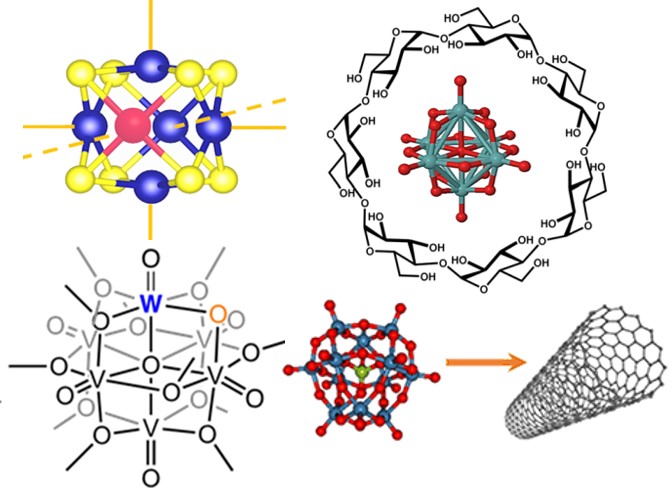
Our research in materials preparation includes synthesis, design, deposition, and characterization of nanoclusters in the gas phase and on surfaces. We are interested in a range of cluster-based materials such as electroactive polyoxometalates, metal chalcogenide superatoms, and host-quest complexes. We design both model and technologically-relevant interfaces by soft landing ionic clusters onto surfaces including self-assembled monolayers, carbon-based electrodes, and semiconducting thin films.
Fragment ions as building blocks for materials design
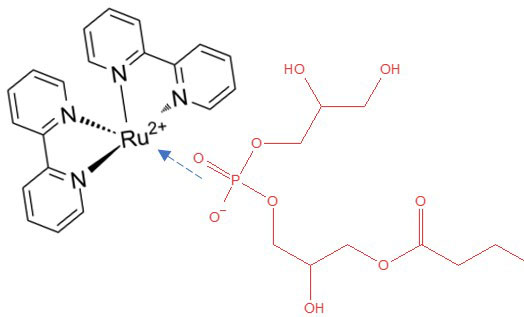
Fragment ions are reactive species due to their undercoordinated atom(s). They undergo unusual reactions on surfaces and generate new molecular materials. Our studies are focused on understanding and controlling the reactivity of fragment ions on surfaces, which opens new directions in the design of materials with unique electronic, optical, and magnetic properties.
Publications
Samayoa-Oviedo, H. Y., Behrend, K.-A., Kawa, S., Knorke, H., Su, P., Belov, M. E., Anderson, G., Warneke, J., and Laskin, J.. (2021) Design and Performance of a Soft-Landing Instrument for Fragment Ion Deposition. Analytical Chemistry 93, 14489 14496. https://doi.org/10.1021/acs.analchem.1c03009
Design of unique nanoclusters using deposition of undercoordinated fragment ions
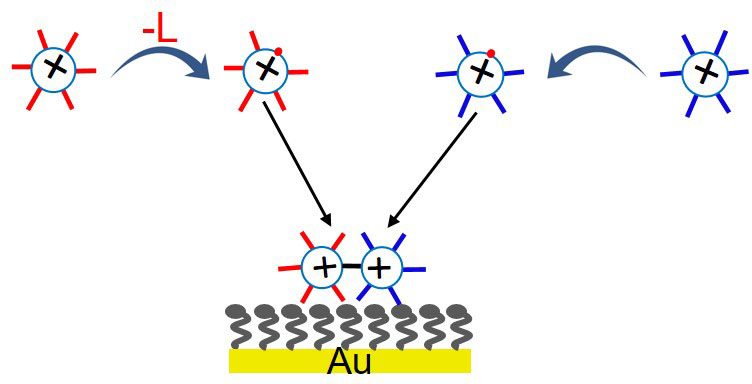
Controlled ligand removal using an ion soft landing instrument equipped with a collision cell provides access to new cluster-based materials. Fragment ions generated by removing one ligand from atomically-precise ligated metal chalcogenide clusters, Co5MS8(L1)6+ (M= Co, Mn, Fe, Co, or Ni, L1=PEt3) undergo selective reactions on surfaces and generate new fused clusters. Soft landing of fragment ions is a powerful approach for generating new functional nanocluster-based species that cannot be prepared using conventional synthetic methods.
Superatoms: synthesis, deposition, and gas-phase characterization using mass spectrometry
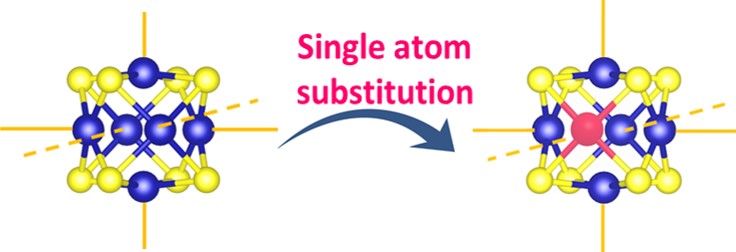
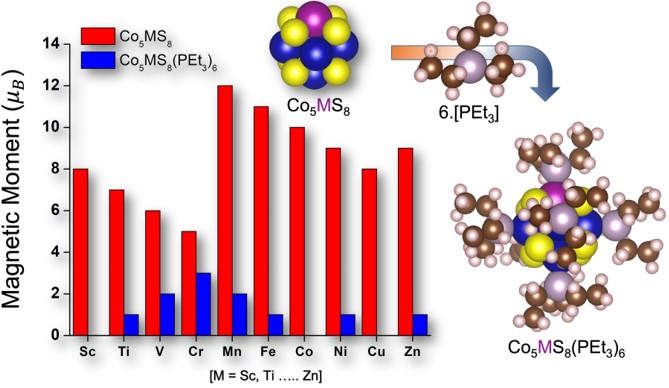
Superatoms are molecular clusters acting like an atom in the periodic table. Superatoms are popular building blocks for the design of new materials. Unlike their elemental analogs, the electron configuration and molecular orbitals of superatoms may be finely adjusted through the atomic-level engineering of their composition to attain a desired property.
We are interested in metal chalcogenide superatoms known for their unique magnetic and electronic properties along with conductivity when assembled in the solid phase. We achieved single atom incorporation to the core of a well-known cobalt sulfide superatom and tuned its electronic structure and magnetic properties.
This research opens a path towards designing novel atomically precise core-tailored superatoms for applications in spintronics, catalysis, and molecular electronics.
Collaborative study with Puru Jena's group at Virginia Commonwealth University.
Publications
- H. Gholipour-Ranjbar, H. Fang, J.Guan, D. Peters, A. Seifert, P.Jena, J.Laskin, Designing New Metal Chalcogenide Nanoclusters through Atom-by-Atom Substitution. Small 2021, 17 (27), 2002927.
- Deepika, Gholipour-Ranjbar, H.; Fang, H.; L. Sertse, P. Jena, J.Laskin, Atomically precise Core-tailored Metal Chalcogenide Nanoclusters: Tuning Electronic Structure and Magnetic Properties. J. Phy. Chem. C. Just Accepted.
Purification and characterization of ions on surfaces
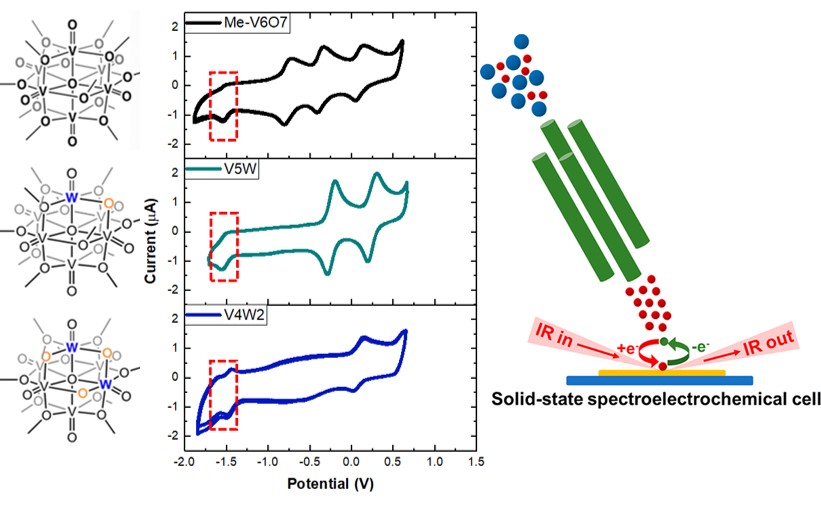
Soft-landing of ions enables the study of ions in the absence of impurities and solvent molecules. This is a powerful approach that we use to prepare high-performance redox supercapacitors and characterize structural changes of redox active molecules after electron transfer. We found out that by removing impurities and counter ions from electroactive clusters their performance in energy storage devices may be significantly improved.
Publications
- V. Prabhakaran, L. Mehdi, J. J. Ditto, M. H. Engelhard, B. Wang, K. D. D. Gunaratne, D. C. Johnson, N. D. Browning, G. E. Johnson, J. Laskin "Rational design of efficient electrode–electrolyte interfaces for solid-state energy storage using ion soft landing", Nature Communications, 7, 11399 (2016). DOI:10.1038/ncomms11399
- P. Su, V. Prabhakaran, G. E. Johnson, J. Laskin "In Situ Infrared Spectroelectrochemistry for Understanding Structural Transformations of Precisely Defined Ions at Electrochemical Interfaces" Analytical Chemistry,90,10935–10942, (2018), DOI: 10.1021/acs.analchem.8b02440
- V. Prabhakaran, G. E. Johnson, B. Wang, and J. Laskin"In situ solid-state electrochemistry of mass selected ions at well-defined electrode-electrolyte interfaces", PNAS, 113, 13324-13329 (2016). DOI: 10.1073/pnas.1608730113
- V. Prabhakaran, Z. Lang, A. Clotet, J. Poblet, G.E. Johnson, J. Laskin“Controlling the Activity and Stability of Electrochemical Interfaces Using Atom-by-Atom Metal Substitution of Redox Species”, ACS Nano, 13, 458−466 (2019).DOI: 10.1021/acsnano.8b06813
Self-organizing layers from complex molecular anions
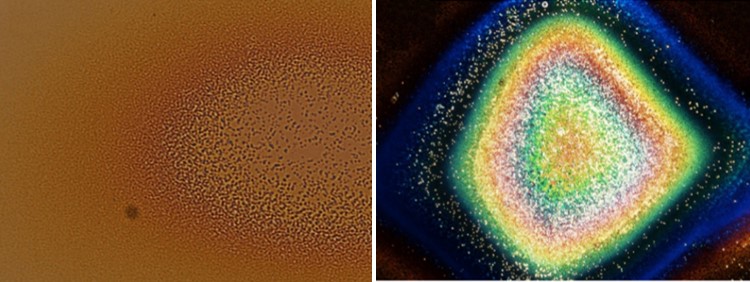
We achieved the controlled generation of macroscopic quantities of a previously unreported type of material on surfaces through deposition of stable mass selected anions and co-adsorption of molecules from the gas phase. For the first time, the classical molecular structure analysis method NMR was used to analyze mass-selected ions collected on a substrate at the end of a mass spectrometer. This demonstrates rational control of the macroscopic properties of the newly discovered anion-based layers.
Publications
- Warneke, M. E. McBriarty, , S. L. Riechers, S. China, M. H. Engelhard, E. Aprà, R. P. Young, N. M. Washton, C. Jenne, G. E. Johnson, J. Laskin “Self-organizing layers from complex molecular anions”, Nat. Commun., 9, 1889 (2018) DOI: 10.1038/s41467-018-04228-2
Gas-Phase Fragmentation of Host-Guest Complexes of Cyclodextrins and Polyoxometalates
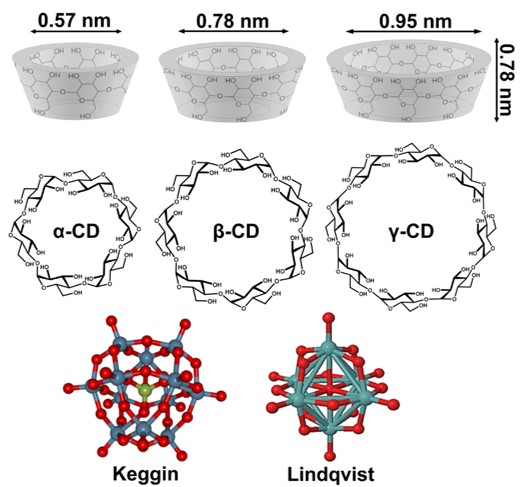
Host-guest complexes are interesting molecular system for the design and construction of supramolecular assemblies for applications in catalysis, materials sciences, and drug delivery. We performed a systematic investigation of the gas-phase fragmentation pathways of host-guest complexes of CDs (α-, ß-, and γ-CD) and small POMs (Keggin W12POM3−, Lindqvist W6POM2− and Mo6POM2−). These compounds undergo an unusual dissociation by losing multiple water molecules. CDs are excellent nanocontainers that stabilize small POM anions that are otherwise unstable in solution. Gas phase fragmentation and ion mobility spectrometry provide new insights into the structures and stability of host-guest complexes.
Publications
- Su, A. J. Smith, J. Warneke, J. Laskin “Gas Phase Fragmentation of Host-Guest Complexes of Polyoxometalates and Cyclodextrins”, J. Am. Soc. Mass Spectrom., Helmut Schwarz Honor Issue, 30, 1934-1945 (2019). DOI: 10.1007/s13361-019-02266-8